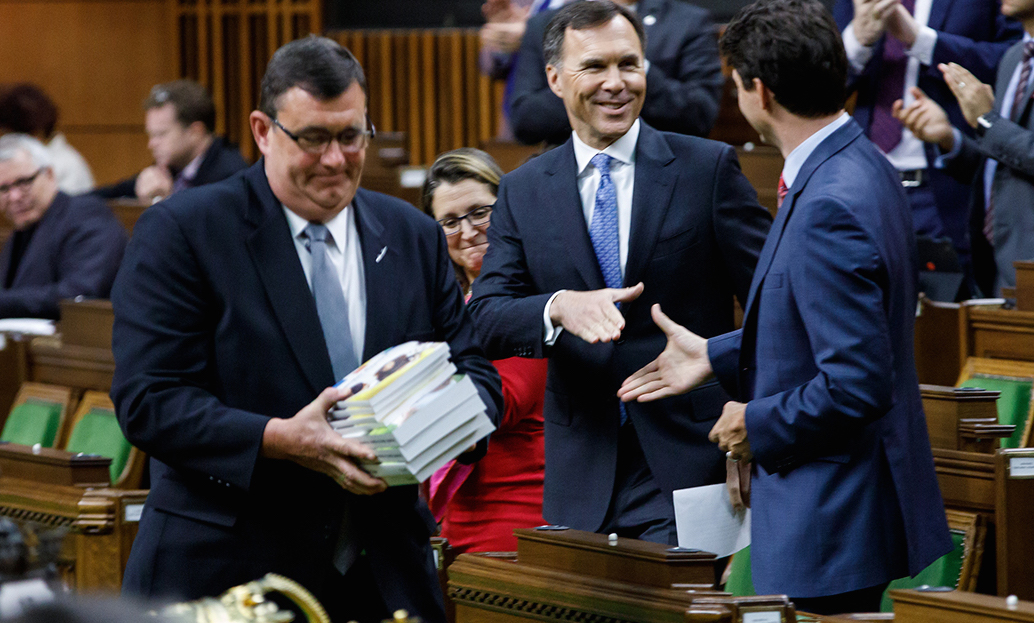The 2019 federal budget was handed down on March 19, and the media frenzy has come and gone. Time to reflect on what might hit the mark in terms of agricultural issues.
After careful review, I have noted an attempt to include food and some agricultural issues into the mix. That makes me happy, maybe even hopeful. At least I can find mentions of food when I search, and also a few mentions of farming and agriculture.
But, I use the word “attempt” because, while the budget purports to “introduce” a national food strategy, the 2019 federal budget is barely a first step, with a mix of food and agriculture initiatives that are largely unconnected.
For a solid national food strategy, you need a solid agricultural strategy
Since their election in 2015, the federal Liberals have been promising a national food policy, and while there are notes of support for food issues and some farm issues peppered throughout the 349-page budget, there is not a lot of detail, and even less depth. The federal government is just tinkering around the edges of any solid strategy or commitment to food and agricultural issues. Food Secure Canada has been calling for a national food strategy for several years, and the tone of their budget assessment is disappointment.
Here are a few of the more positive and hopeful notes.
There is close to $135 million of new money for northern and Indigenous community food initiatives, a National School Food Program and a Local Food Infrastructure Program. That is important news for hungry children and their parents and communities. Whether it will ensure the right to food and help reduce poverty is another question. This budget also includes measures to encourage the reduction of food waste, as well as a “buy Canadian” food program.
And there is $950 million in money for innovation in five industry-led “super clusters” or groupings, one of which is food production. How that money will be spent is hard to decipher. Will any of it be targeted to the farmers who produce food? The other super clusters are digital technologies, artificial intelligence, advanced manufacturing, and ocean industries.
There is $2 billion of supply-management compensation to soften the blows of the various free trade agreements that the government has signed. The trade agreements named are the Canada-European Union Comprehensive Economic and Trade Agreement (CETA) and the Comprehensive and Progressive Agreement for Trans-Pacific Partnership (CPTPP). That is a short-term, inadequate, solution to an ongoing problem — that of signing away orderly marketing systems in the name of free trade. This explanation from the National Farmers Union outlines why orderly marketing and supply management is fundamental to food security. And this Briarpatch article explains the impact of the erosion of orderly marketing systems.
Tinkering around the edges
The 2019 budget includes a few short paragraphs on page 207 about intergenerational business transfers, and almost in the same sentence a mention of farmers and fishers, and the need for continued dialogue on this issue. This is hopeful language — but little detail is provided. Is this a tax measure? It’s likely, since no new money seems to be attached and few specifics are given. Meanwhile, intergenerational transfer of family farms is a huge issue, one fraught with aging farmers, land speculation, and a new generation of young agrarians who are new to farming and have very little policy support.
For example, these Alberta farmers are among the many trying to transfer their farm in a sustainable, fair way. Juxtapose their situation with a recent documentary on farming and land speculation in Saskatchewan, and it is possible to see why federal budgets must include stronger food and agriculture strategies. They also need to include policies that truly support intergenerational transfer and the young farmers who are struggling to get into farming and contribute to sustainable methods that could help mitigate climate change.
The 2019 federal budget does not provide a national food strategy, and does not even hint at what is really necessary — a national food and agriculture strategy.
I would have hoped that this budget, by “introducing” the importance of a food strategy, would have made the link between agriculture and food.
After all, it is 2019, and some of us have been waiting decades.
Lois Ross is a communications specialist, writer, and editor, living in Ottawa. Her column “At the farm gate” discusses issues that are key to food production here in Canada as well as internationally.
Photo: Adam Scotti/PMO
Help make rabble sustainable. Please consider supporting our work with a monthly donation. Support rabble.ca today for as little as $1 per month!




